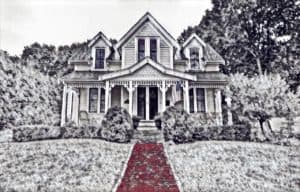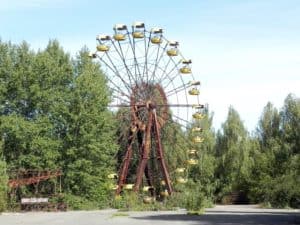Author Archives:Lydia Sampson

22
NovGiving Thanks to the Library (and My Job)
 This Thanksgiving, as per usual, I give thanks to my family, friends, health, the abundance of food on the table, and so on. Coming up on my one year anniversary working at the Morrill Memorial Library though, I feel particularly grateful for my new job. Not only have I come to adore my colleagues and thoroughly enjoy entering our majestic historic building every day, but the shift to public librarianship has rekindled my faith in the future of the beloved free public library in American culture.
This Thanksgiving, as per usual, I give thanks to my family, friends, health, the abundance of food on the table, and so on. Coming up on my one year anniversary working at the Morrill Memorial Library though, I feel particularly grateful for my new job. Not only have I come to adore my colleagues and thoroughly enjoy entering our majestic historic building every day, but the shift to public librarianship has rekindled my faith in the future of the beloved free public library in American culture.
No doubt, many residents of Norwood and beyond share my appreciation for the library’s variety of programming and services, from Musical Sundays to passport appointments, as well as the availability of bestsellers on their release dates, and our bend-over-backwards staff. It warms my heart to see crowds in the library daily, showing that libraries still thrive, even in the digital age.
My gratitude for these 11 months of employment at MML also extends to the health and well-being that comes from work/life balance, supportive administration, and a relative lack of workplace drama. Clearly no placement is perfect and employees will likely face some conflict in any position at any institution, but hopefully not enough to impact stress and anxiety levels, sleep, or eating patterns. Although many dive into the job market seeking higher pay or career advancement, surely plenty just anticipate feeling “happier” elsewhere. Happy staffers, however, don’t get that way without deliberate efforts of their bosses and colleagues.
As I gained experience in libraries and eventually found myself in supervisory positions, I decided to supplement my degree in Library Science (MLS) with another in Management (MSM). As a lover of learning and self-improvement, this seemed useful for a conflict-avoidant introvert charged with managing a department. Lessons in leadership proved invaluable to my career trajectory. As I reflect on a year of contentment in my new office, I give thanks to Peter Drucker, Jim Collins, Anita Roddick, and other pioneers from whom I gained inspiration.
I owe a debt of gratitude to some whose wisdom truly struck a chord and followed me to Norwood. I read Dale Carnegie’s classic How to Win Friends and Influence People, originally published in 1936. I expected to roll my eyes at outdated advice and the beginnings of an industry of smarmy self-improvement books on how to get ahead in the rat race. On the contrary, I found Carnegie refreshingly gentle and charming. Suggestions such as, “Instead of condemning people, let’s try to understand them,” and, to get the best of an argument, avoid it “as you would avoid rattlesnakes and earthquakes,” remain as timeless as the Golden Rule. As both a leader and a follower I try hard to listen, remain calm, and empathize with others. I know that when fellow workers treat me with such respect it makes my 8 hours a day quite pleasant, and I’d like to do the same.
I must recognize John Kotter, whose writings on change management prove especially useful these days given the breakneck speed of new technological developments. Not just for books anymore, libraries deal in e-books, databases, streaming video and more. We offer instruction and tutoring on “tech” of all kinds. Internally, our software for checking out items, ordering materials, booking appointments, etc. is in constant flux. Getting used to new technology comes with a learning curve. Kotter’s The Heart of Change serves as a useful manual for getting buy-in and communicating effectively to get teams excited about imminent changes, assuring positivity rather than behind-the-scenes grumbling.
The Morrill Memorial Library has a mostly female staff, as is common in the profession overall. Interpersonal harmony on the job stems from sensing others’ frames of reference and spotting pitfalls in communicating with one’s own gender as well as others’. In Pat Heim’s Hardball for Women she describes the risk of female coworkers turning on each other. She calls this the “power dead-even rule.” It refers to an unspoken “pact” that women who work together should retain steady and equal power levels. Everyone gets along fine until one member of the sisterhood advances, and suddenly the others (usually subconsciously) act resentful and undermine her success. Heim also urges men to refrain from criticizing women for being “emotional,” and women to see frankness as practical, not intimidating. Let’s hope that all too common relationship breakdowns never happen, but for now I thank all of the MML “library ladies,” for their support as I got up to speed this year.
My own pleasure-reading led to an unusual recommendation for lessons on leadership and fostering peace in the workplace. Amanda Palmer, iconic musician and crowdfunding pioneer, wrote The Art of Asking, an autobiographical piece subtitled “How I Learned to Stop Worrying and Let People Help.” While “asking” may sound like the opposite of “thanking,” both actually benefit the asker and thanker alike. Asking for help tells your peers, “We’re in this together. I trust you and recognize your talents.” The boss who bears the weight of the world on her shoulders makes “underlings” feel weak, whereas she who asks, empowers. Not only can asking make one’s own load lighter, but rather than burdening others it gives them a chance to shine. They could always say no, but chances are they’ll thank you for it.
Happy Thanksgiving, and thanks again to Norwood, the library, and all of my coworkers.
Lydia Sampson is the Technical Services Dept. Head at the Morrill Memorial Library in Norwood, MA. Look for her article in the November 22, 2018 edition of the Norwood Transcript and Bulletin.

16
NovTalent Search
 We all have a variety of skills and talents. Perhaps we have worked hard to develop these abilities over time or perhaps we were lucky enough to be born with a gift or two. For example when I’m asked to write an article for the weekly library column, I feel equipped to do so. I’m comfortable writing children’s books or poetry. Crafting words is a skill I’ve developed over time. Likewise, I enjoy entertaining. I become a whirling dervish beforehand, but hosting a family gathering or holiday party is definitely my cup of tea.
We all have a variety of skills and talents. Perhaps we have worked hard to develop these abilities over time or perhaps we were lucky enough to be born with a gift or two. For example when I’m asked to write an article for the weekly library column, I feel equipped to do so. I’m comfortable writing children’s books or poetry. Crafting words is a skill I’ve developed over time. Likewise, I enjoy entertaining. I become a whirling dervish beforehand, but hosting a family gathering or holiday party is definitely my cup of tea.
However, the question I often return to is this: What am I doing with the wee talents that I have? Am I using them to the best of my ability? Do you ever ask yourself the same thing? And how wonderful it is when people share their talents, whether it is here in the library or at a local hospital, school, or homeless shelter. My coworker, Marg, is an example of someone who is always giving of her time and talent. She ventures to the housing facilities in town, teaching crafts like wreath-making and decoupage. My father was the same way, spending more time helping others than finishing his own projects.
If you are like me, you may have a “Bucket List of Talents” – skills you would like to master or perfect before you depart from God’s green earth. When my father passed away this April, my wish list grew longer. I thought about all his talents that were foreign to me. For years before Dad become a Dean at Central Connecticut State University, he had been an Industrial Arts teacher. While he inspired his students with his designs and craft, no one in my immediate family had learned to use the tools on his work bench. He had saws and drills and levels galore, and yet I hadn’t a clue how to handle them. How sad was that?!
For a brief amount of time I considered researching the topic of woodworking at the library. After all, we had book titles from Quick and Easy Woodworking Projects by the Handyman Club of America (2000) to Woodworking Simplified: Foolproof Carpentry Projects for Beginners by David and Jeanie Stiles. Maybe I could learn to craft something. It wasn’t impossible, was it? In middle school I made a candle stick holder on a lathe. Perhaps I could watch a Youtube video or, better yet, take a Woodworking 101 class. The only problem was my heart wasn’t in it. While I marveled at my father’s talents, I didn’t feel an ounce of excitement toward wood unless it was going into the fireplace. I loved my father, but his passion wasn’t going to be my own. Instead my mother and I found a wonderful neighbor who adopted my father’s collection; he knew exactly what to do with each and every tool.
Nevertheless I hoped to follow in Dad’s footsteps in some fashion. It couldn’t be sailing – too expensive. Or model planes – too many parts. Since it was spring, I began to think about gardening. Again, I checked out a few books: Stuff Every Gardener Should Know by Scott Meyer; Improving Your Soil by Keith Reid and Practical Gardening by Jackie Matthews, Richard Bird and Andrew Mikolajski. I also peeked at his Harris Seed catalog. Lo and behold, I found a box of his seeds in his basement that was waiting to be planted (tears)! At least gardening was a talent I had begun under his tutelage. In my backyard, I’d managed to grow a small plot of tomatoes and peppers over the years, enough for salad and soup now and then. Dad’s garden plot had rich soil waiting for someone to start seeding. Turns out, I wasn’t that person.
Surprisingly, my 15-year old daughter, Sarah, was the one who took on this project. She researched which seeds to plant and how to plant them. Working in “Papa’s Garden,” as we called it, was healing for her. It also became a community project. The neighbors brought over seeper hoses and black weed barrier cloth to make the work lighter. In no time the seedlings took root and the garden began to thrive. Sarah even succeeded in growing bundles of eggplant, which had never grown for me. Along one edge she kept my Dad’s rhubarb, while colorful zinnias lined the other end. In between there were peas and beans and zucchini and peppers. Perhaps this talent had skipped a generation, but it was growing nonetheless. I decided to stick with the herbs on my deck and in my kitchen instead. After all I had the Indoor Edible Garden by Zia Allaway to help.
What I’ve come to realize is that there are some talents that may never come my way, as hard as I might try. Woodworking is one of them. And why struggle with a garden when I can sit back and enjoy the fruits of my daughter’s labors? That said, I did discover one of my father’s passions that I can do with gusto. I watched all of the World Series with a sense of pride and an understanding of why it is America’s “greatest pastime.” It seems my talent search ended right where it began, with words, these words: Go Sox! Damage Done!
Nancy Ling is an Outreach Librarian at the Morrill Memorial Library in Norwood, MA. Look for her article in the November 15, 2018 edition of the Norwood Transcript and Bulletin.

9
NovNorwood: A Home Town
 When we moved to Norwood in 2012, I was excited about owning a historic home that was within walking distance to both my work at the library and the town’s center. I wondered how many families had placed their hands on the sturdy wooden banister leading from the second floor. I imagined other women lovingly serving meals for family and guests in the spacious dining room. I was curious about the children and adults who might have peeked out the windows to watch passersby or wait for Halloween trick-or-treaters to knock on the distinctive double doors.
When we moved to Norwood in 2012, I was excited about owning a historic home that was within walking distance to both my work at the library and the town’s center. I wondered how many families had placed their hands on the sturdy wooden banister leading from the second floor. I imagined other women lovingly serving meals for family and guests in the spacious dining room. I was curious about the children and adults who might have peeked out the windows to watch passersby or wait for Halloween trick-or-treaters to knock on the distinctive double doors.
I wished there were photographs hidden in far reaches under the eaves of the deep closets, but there were not.
Working as a librarian certainly has its benefits because I knew just where to look to locate a bit of the house’s history and inhabitants. All of this information can be accessed by anyone who visits Norwood’s history collection in the Cushing Reading Room. Both the Annual Town Reports (now digitally available through the Minuteman Library Network catalog) and Norwood Street Lists are there for anyone to use to research.
Included on those history shelves (while under lock and key, the Adult Information Services librarians will be happy to help unlock them) are two volumes – Norwood: A Home Town. They are rich in architectural detail and structural information that was compiled by both the Norwood Historical Commission and the Massachusetts Historical Commission in the last two decades of the 20th Century. Hundreds of Norwood’s homes are listed by street address; pages that begin with Atwood Avenue and end with Winter Street. Most of the historical descriptions of the hundreds of homes were written by researcher Edward Gordon.
Norwood: A Home Town begins with details of the Town of Norwood’s districts and commercial buildings. Norwood Center, or “the hook,” the F. Holland Day House, the Winslow Brothers tannery complex are all described and illustrated. The town’s amazing presses, among them the Norwood Press and the Plimpton Press, are included. Of particular interest to me are the pages devoted to George H. Morrill & Co. Printing Ink Works. It was George Morrill who built Norwood’s library with his own funds, in memory of his daughter. Like Carnegie of the same era, Morrill shared his wealth and handed over the keys to the library to the town in 1898.
Morrill eventually moved his ink company out of Norwood and consolidated with four other ink companies. In 1945 the Geo. H Morrill Company Division of General Printing Ink Corp was renamed Sun Chemical Corporation.
In 2012, when I decided to research my new home on Prospect Street, I went to the Norwood: A Home Town and the Norwood Street Lists. 305 Prospect Street is listed merely as the Samuel Page House, named for its first owner. It was built in either the 1870s or 1880s on land purchased from the Fairbanks family. On a late 19th century map of Norwood (that can be found in the library’s map drawers), everything north of Prospect Street from Winter to Nahatan streets was illustrated as woods or farmland. This was truly the edge of Norwood’s town center just south of Westwood.
In 1989 the home included a barn in the rear which was removed sometime in the late 20th century. The actual date the house was built is unknown; there was a residence there in 1876, and Samuel Page was listed in the town’s Street Listing as residing there in 1880. However, there is a period when he was listed as living at 276 Prospect Street between 1897 and 1900. Whether mistakes were made, or Samuel moved out to rebuild his home after a fire destroyed the original is unknown.
The architectural character of the house, however, was of the 1880s and today might be thought of as hybrid, encompassing the Stick, Victorian and Queen Anne styles. What we might call Gingerbread is a particular characteristic with overlapping multiple-sided shingles and pretty trim. Perhaps Samuel built it over the years, finally inhabiting it with a family in 1900.
From the Town of Norwood’s Street Listings early in the 20th century, Lillian Page is listed as the resident of the house between 1908 and 1922. She is presumably Samuel’s daughter, or perhaps a younger wife. She left the home in 1922.
The 37-year period between 1922 and 1959 saw three families in the home, two of them staying only ten or eleven years each. Twenty-seven-year-old Joseph Youlden and his wife Dorothy, five years younger, might have raised their family there. Children under twenty were not listed in the Street Listings. In 1939 thirty-five-year-old Harry Fraser (a landscape architect) and his wife, Helen moved to Prospect Street from Highland Street – from perhaps a much smaller home that is not listed in the Norwood: A Home Town. In 1949 Raymond and Grace Rafuse, both in their fifties, moved from a house across from the Highland Cemetery on Winter Street. Their two working daughters lived with them, Gladys was born in 1920, and Jean was born in 1925.
It was in 1959 that John Payne moved into the home from Dedham and lived there for 41 years with his wife, Jeannette. For a time, a young nurse named Mary Orphan lived with them. There were several anecdotal stories about the Paynes – there were teenage daughters who had parties there. Jeannette died in 1988, and the home then lost its attentive care. It was in particularly neglected shape when a young hockey-minded couple from the area, Timothy and Anne Lovell, purchased it in 2001. They restored much of its charm and character, added a long brick walkway to the front porch, and renovated the kitchen and baths. They lived there with their four young children until 2012.
We loved living in such a sweet and gentle home in one of Norwood’s lovely neighborhoods and will miss much about the house, particularly its front and side porches. We watched lightning storms travel south as we rocked on our glider on the left front porch, hidden by the azaleas and Boxwood bushes. We admired joggers and dog walkers who took in their exercise every morning and night. From the private side porch off the kitchen, we sipped morning coffee, our feet propped on the white railing.
Approaching cars shown lights in our dining room windows as they turned the corner from Cottage Street heading east towards Dedham. Through open windows, we heard the sirens of Norwood’s most exceptional fire and police departments and listened to the faint sounds of concerts on the Town Common. In the wee morning hours near 4 am, we were sometimes sleepily awakened by the sound of the commuter rail’s train whistle.
Lucky for us, we will commute from our home on the South Coast to our jobs in Norwood, a Town in which we truly feel “at home.” If you want to know more about the houses in Norwood, visit the library’s historical collection in the Cushing Reading Room.
Charlotte Canelli is the Director of the Morrill Memorial Library in Norwood, Massachusetts. Read Charlotte’s column in the November 8, 2018 edition of the Norwood Transcript and Bulletin.

1
NovOn Your Marks, Get Set… Bake!
 Or as the Brits say, “bike.” And we’re not talking cycling. I just finished drooling over the first four seasons of the Great British Baking Show, for the second time, and can’t wait for Season 5. My latest TV addiction, GBBS, is thoroughly entertaining without being treacly. Judges Mary Berry and Paul Hollywood preside over brigades of British bakers who go “dough to dough” over the course of ten weeks to try to bring home the blue ribbon. Once I tuned in, it was love at first bite. In an enormous white tent set in the English countryside, 12 amateur bakers chosen from thousands compete in three weekly challenges- the signature bake, the technical, and the showstopper. With one unlucky soul voted off each week, it’s like Survivor but with spatulas.
Or as the Brits say, “bike.” And we’re not talking cycling. I just finished drooling over the first four seasons of the Great British Baking Show, for the second time, and can’t wait for Season 5. My latest TV addiction, GBBS, is thoroughly entertaining without being treacly. Judges Mary Berry and Paul Hollywood preside over brigades of British bakers who go “dough to dough” over the course of ten weeks to try to bring home the blue ribbon. Once I tuned in, it was love at first bite. In an enormous white tent set in the English countryside, 12 amateur bakers chosen from thousands compete in three weekly challenges- the signature bake, the technical, and the showstopper. With one unlucky soul voted off each week, it’s like Survivor but with spatulas.
Delightfully quirky hosts Mel and Sue provide comic relief in the form of corny culinary and occasionally off-color quips. They take turns having “the happy privilege of announcing this week’s star baker” to the apron-clad contestants nervously awaiting their fate. When Mary and Paul determine the person “to whom we must sadly say goodbye,” there’s an outpouring of hugs, tears, and promises to stay in touch. It’s all very British and genteel- until it’s not. (More on “Bingate” later.)
Not only do the bakers come to feel like family after we see clips of them with their loved ones and colleagues at home and at work, but watching them create sweet and savory delicacies from scratch is the icing on the cake. If you’re counting carbs this may not be the show for you, but if you have a pinch of self-control it’s a great way to indulge your cravings vicariously. It can also be pure torture. While the competitors labor to produce the perfect Black Forest gateau or quintessentially British Bakewell tart, I press pause and scour my kitchen for something- anything- sweet.
Handsome blue-eyed Paul Hollywood, dubbed the Queen of Mean by Mel, can reduce a baker to tears with the words, “that’s a mess,” or simply, “it’s a shame,” while grandmotherly Mary Berry almost always finds something positive to say. After tasting one of lovely Ugne’s Lithuanian cottage cheese cookies, Paul looked her in the eye and declared, “I don’t like it.” As she struggled to hide her disappointment, he admitted, “I love it.” Mary’s harshest critique, meanwhile, may have been, “it’s a bit under baked, and the raspberry is bleeding into the sponge.” She disdains a “soggy bottom,” but her pronouncement of “scrummy” is highest praise.
I can now toss around culinary gems like genoise or crème patissiere (crème pat, to those in the know). Thanks to GBBS, I’ve added a wealth of colorful British expressions to my vocabulary. Aerospace engineer and Cambridge-educated Andy, who skipped graduation to practice for the Season 4 quarter-final, was “really really chuffed” when Paul liked his marjolaine. And to console Chetna- dismayed at having received a less than stellar review- Paul said, “don’t lose your rag” over this. “Fiddly” ingredients, I found out, are particularly difficult to work with, and the bakers are forever “whacking” things into the oven, which is not nearly as violent as it sounds.
Realistically, I’ll probably never make any of the petit fours, mini pear tarts, biscotti, or Victoria sandwich cakes myself. I can whip up a “cracking” carrot cake and my apple crisp is legendary, at least among my family. But when an early attempt at baking a German Chocolate cake with my teenage daughter went horribly wrong, I hung up my measuring spoons for good. I suspect Belfast-born Iain, following the infamous Baked Alaska meltdown of Season 2, could relate.
After a rival contestant inexplicably removed his ice cream extravaganza from the freezer on a hot summer day, poor Iain, in a fit of frustration, dumped the entire mess in the bin and stormed off. He was, unfortunately, eliminated as he had nothing to show the judges. The culprit, claiming illness, never returned to the tent.
Not all episodes are so fraught with drama, and one disastrous outcome does not automatically spell dismissal. (Spoiler alert: Despite her walnut cake placing last in a technical challenge, Nadiya went on to become the Season 3 winner and a minor celebrity herself. The following year she was asked to bake the Queen’s 90th birthday cake.)
I was rooting for 17-year-old Martha from Season 1, who smiled through her tears and was so supportive of her fellow bakers that I was crushed when she was sent home. And how could you not love Richard, the rosy-cheeked builder with two adorable little girls, whose self-effacing humor made everyone laugh. I emailed my relative in South London that I was hooked on the show. She wrote back to admit, “it’s been a bit of a viewing highlight for us over the years,” adding “it sounds a bit sad.”
It seems we’re in excellent company. The Great British Bake Off, as it’s called overseas, is one of the most popular programs in the U.K.
In the comfort of your own kitchen you can recreate some classics from the first season by borrowing The Great British Bake Off: Big Book of Baking by Linda Collister. For the truly inspired, there’s The Great British Bake Off: How to Turn Everyday Bakes into Showstoppers. It’s full of mouthwatering photos and recipes for afternoon teas, bake sales, lunches with friends as well as scrummy desserts for dinner parties, birthdays, and other festive occasions. It also contains ideas for creating gorgeous garnishes using chocolate curls, spun sugar, and elegant piping to achieve that wow-factor every time.
Whether you’re Michelangelo with a mixer or more of an armchair baker like myself, I challenge you to check out any of GBBS’s five seasons on DVD and not end up binge-watching the entire series- or just plain bingeing.
April Cushing is the Adult and Information Services Supervisor at the Morrill Memorial Library in Norwood, Mass. Read April’s column in the November 1st edition of the Norwood Transcript & Bulletin.

25
OctMy Nuclear Vacation
 I recently returned from the trip of a lifetime and checked one of the top items off of my “bucket list.” London? Paris? Venice? No. At long last, I traveled to the Ukraine, to Chernobyl, the site of the worst nuclear disaster in history.
I recently returned from the trip of a lifetime and checked one of the top items off of my “bucket list.” London? Paris? Venice? No. At long last, I traveled to the Ukraine, to Chernobyl, the site of the worst nuclear disaster in history.
In 1986, during the Cold War when the Ukraine was part of the Soviet Union, reactor number 4 at the Chernobyl nuclear power plant exploded, launching radioactive material far and wide, contaminating most of the Ukraine and neighboring Belarus, and extending throughout Europe and the USSR, and beyond. In the immediate aftermath, finger-pointing, political agendas, and secrecy delayed evacuation, exposing local residents to severe radiation. Finally, buses carried thousands of residents off, assuring them they’d come home in a few days. They never returned, and the town of Chernobyl and neighboring city of Pripyat, constructed specifically for the power plant builders and employees, became ghost towns.
The Ukraine designated an exclusion zone surrounding the entire region with barbed wire fences, checkpoints and armed guards. This forbidden territory became my dream destination. As an avid adventure traveler and “urban explorer,” ghost towns, abandoned buildings, and post-disaster locales fascinate me. For years I knew of Pripyat, a city frozen in time, full of empty schools and homes, and even an amusement park set up for a May Day celebration that never happened. I had seen photos and descriptions online and in Atlas Obscura: An Explorer’s Guide to the World’s Hidden Wonders, as well in the horror movie Chernobyl Diaries (which turns out to have surprising accuracy, until the part when zombies appear).
I had to see this place with my own eyes. We arrived in Kiev, a delightful city, and spent several days sightseeing and eating well, with the help of Lonely Planet: Ukraine. Then met our small group of adventurers and headed two hours north to Chernobyl. Tourists may visit only with authorized guides, many signatures on liability waivers, and instructions on how to dress, behave, and use a Geiger counter. Most visitors spend a day in the exclusion zone, but we opted for the two day tour, including a sleepover in a no-frills Chernobyl hotel.
Although entering buildings is “technically” forbidden, we explored the shells of schools with kids’ books covering the floors in rooms of overturned desks, with occasional stuffed animals or children’s shoes peeking out of the rubble. We walked through abandoned gymnasiums with parquet floors caving in, dark office buildings interrupted mid-workday, and people’s homes with heartbreaking glimpses of how they lived before fleeing in a hurry. The iconic amusement park rose out of the forest, the Ferris wheel rusted but still standing, and bumper cars poised to smash although they haven’t moved for decades.
Our tour took us inside the shell of a defunct cooling tower, to the “red forest,” where Geiger counters beeped non-stop, along the top secret Soviet Duga radar, and finally up close to reactor 4 itself. For years this proximity would have caused radiation sickness, but in September 2017 construction and placement of a new “sarcophagus” was completed, covering the destroyed reactor and its inferior original enclosure, assuring confinement of the radiation for at least 100 years. A fascinating new documentary, Building Chernobyl’s Megatomb goes into detail on this project.
The explosion occurred when I was young, so I only knew the basics about Chernobyl until reading Serhii Plokhii’s timely book, Chernobyl: The History of a Nuclear Catastrophe. This 2018 definitive history delves into the origins and construction of the power plant, a nearly minute to minute account of the night of the explosion itself, and the local and global impact of what occurred. Plokhii introduces major players in the event, from laborers to politicians, humanizing them as he describes personalities and motivations, often incorporating their own words. Plokhii’s history extends through the collapse of the USSR up to the current day. I visited Chernobyl well-informed.
Do not avoid coming to the library because of the radioactive librarian! In fact, entering the exclusion zone for a limited time exposes people to little more harm than x-rays and air travel. Geiger counters alerted us of “hot spots” – certain areas or items with dangerous radiation levels: the cloth part of a discarded gas mask, the “claw” of a piece of heavy machinery that reached into the reactor in attempts to pull out its graphite rods, an industrial refrigerator beside a crate of empty milk bottles.
Believe it or not, some returned to Chernobyl after the evacuation, and a handful still live in the exclusion zone. Like residents unwilling to heed evacuation warnings due to hurricanes and fires, these individuals knew no other “home,” and would rather die in Chernobyl than live as refugees in Kiev or elsewhere. A film available to watch for free on Kanopy, The Babushkas of Chernobyl, profiles several of these residents, all elderly women, and we had the opportunity to meet one in person. Victoria lives with her dog Dana, who entertained us by singing when someone played the accordion. She served snacks and vodka and surmised that her husband died because he did not drink vodka.
Deaths from nuclear fallout prove difficult to measure. Radiation sickness does not kill instantaneously, but after days, weeks or years depending on exposure. Cancer rates and birth defects skyrocket and researchers cannot always parse out which would have occurred anyway versus which were brought on or accelerated by radiation. The babushkas somehow survive and live off the land in Chernobyl. For me, it was an incredible place to visit… but I wouldn’t want to live there.
Lydia Sampson is the Technical Services Dept. Head at the Morrill Memorial Library in Norwood, MA. Look for her column in the October 25, 2018 edition of the Norwood Transcript.
